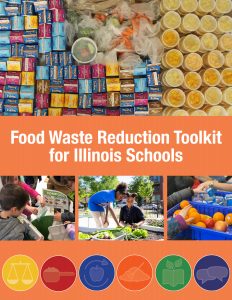
Interested in reducing school food waste? Attend the webinar on the Food Waste Reduction Toolkit for Illinois Schools on July 27 at noon to learn how!
The Food Waste Reduction Toolkit for Illinois Schools is a comprehensive resource that identifies the main sources of wasted food and offers strategies for food waste prevention, food recovery and redistribution, composting, education and engagement, and celebrating success. The Toolkit’s numerous case studies provide examples of these strategies in action.
Susan Casey & Becky Brodsky from Seven Generations Ahead’s Zero Waste Schools program will provide an overview of the food waste reduction strategies in the Toolkit.
You’ll also hear from these inspiring case study contributors:
- Lauren Roberts, Gourmet Gorilla, will highlight the Chicago-based school food service company’s food waste tracking system which has led to a 10-15% waste reduction in serving lines.
- Greta Kringle, Science Teacher, Solorio Academy High School, will share how she integrated zero waste thinking and food waste reduction into her chemistry curriculum and how it became a focus for the Zero Waste Ambassadors Club at this Chicago Public School.
Now is the time to plan how your school can reduce food waste to benefit your students, your community, and the planet.
Click HERE to register for the webinar. Download a pdf of the Toolkit HERE.
The Food Waste Reduction Toolkit for Illinois Schools is a project of the Wasted Food Action Alliance and was developed by SGA in collaboration with partners from the Wasted Food Action Alliance.
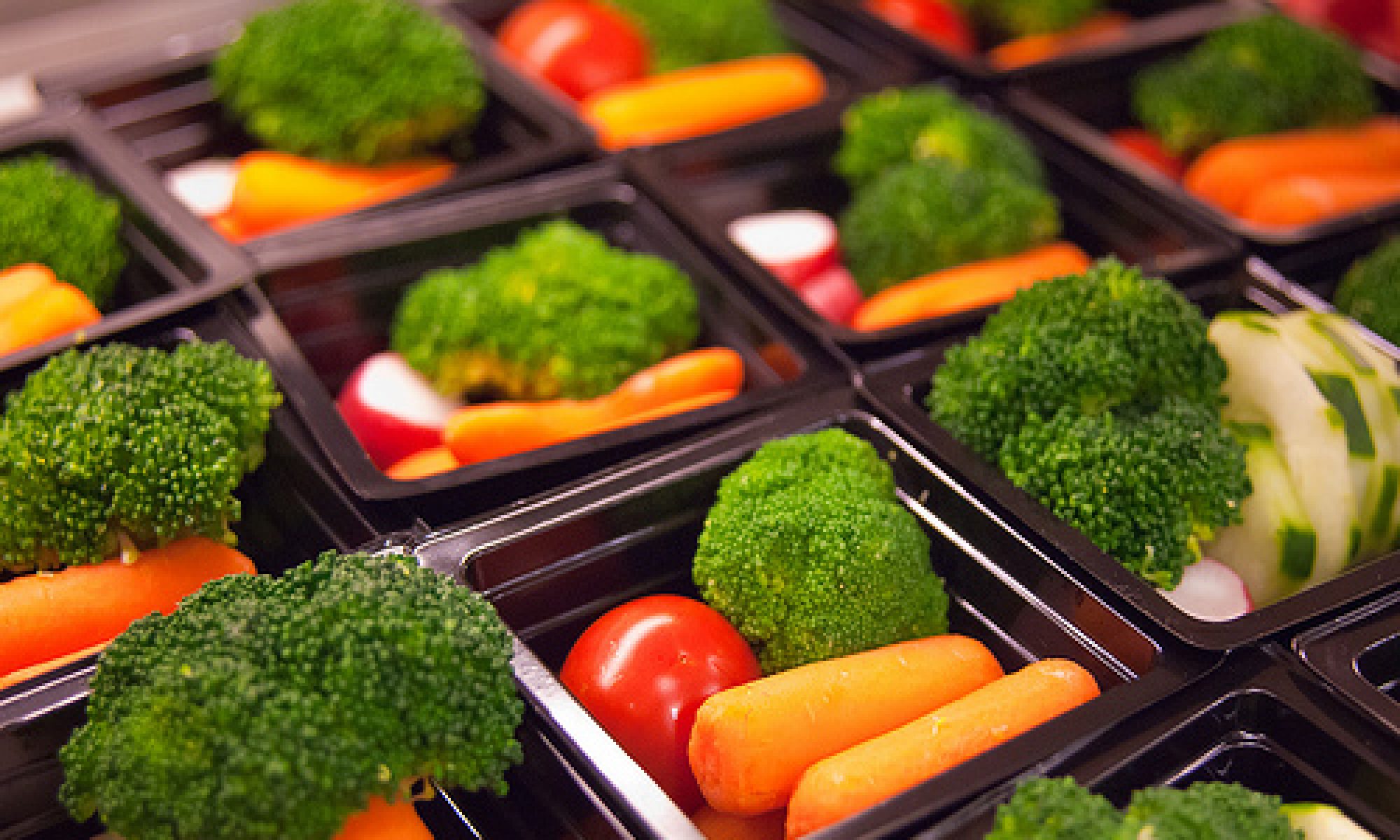

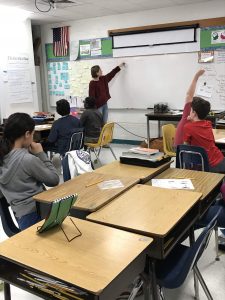 Amanda Price piloted the unit in two fifth grade science classes at Butler Elementary and Sandburg Elementary February-March 2020. Both schools are located in Springfield, IL. Amanda works as a Graduate Public Service Intern (GPSI) in the offices of Environmental Education and Community Relations at Illinois EPA. The
Amanda Price piloted the unit in two fifth grade science classes at Butler Elementary and Sandburg Elementary February-March 2020. Both schools are located in Springfield, IL. Amanda works as a Graduate Public Service Intern (GPSI) in the offices of Environmental Education and Community Relations at Illinois EPA. The 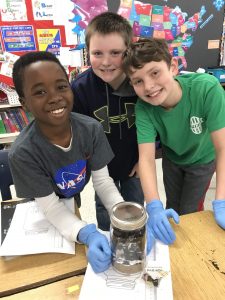 driven by student questions. It teaches students the importance of food waste reduction, landfill diversion, and composting as part of a circular food system. Students create “landfills in a jar” with materials given to them with the goal of protecting the sand, or “groundwater,” at the bottom of the jar. Students also create “compost in a jar” using fresh food scraps and other compostable materials. Students monitor their jars throughout the unit and record scientific data such as temperature and mass. They learn how bacteria act as decomposers. The unit also incorporates map-reading and asks students to think critically about the pros and cons of choosing space for new landfill construction.
driven by student questions. It teaches students the importance of food waste reduction, landfill diversion, and composting as part of a circular food system. Students create “landfills in a jar” with materials given to them with the goal of protecting the sand, or “groundwater,” at the bottom of the jar. Students also create “compost in a jar” using fresh food scraps and other compostable materials. Students monitor their jars throughout the unit and record scientific data such as temperature and mass. They learn how bacteria act as decomposers. The unit also incorporates map-reading and asks students to think critically about the pros and cons of choosing space for new landfill construction.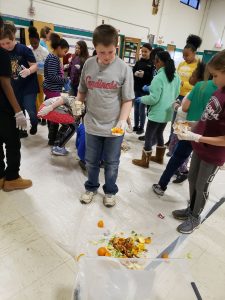 The main hands-on activity in the unit is a food waste audit, which can be performed at various scales. Students use data from the audit to calculate the estimated food wasted per person, during the school year, etc. Students end the unit by creating a community awareness or action plan to inform their community or advocate for change. A few students at Butler Elementary wrote a letter to the principal asking him to install a clock in the cafeteria so students could track how much time they had to eat. The principal took swift action and ordered the clock.
The main hands-on activity in the unit is a food waste audit, which can be performed at various scales. Students use data from the audit to calculate the estimated food wasted per person, during the school year, etc. Students end the unit by creating a community awareness or action plan to inform their community or advocate for change. A few students at Butler Elementary wrote a letter to the principal asking him to install a clock in the cafeteria so students could track how much time they had to eat. The principal took swift action and ordered the clock.